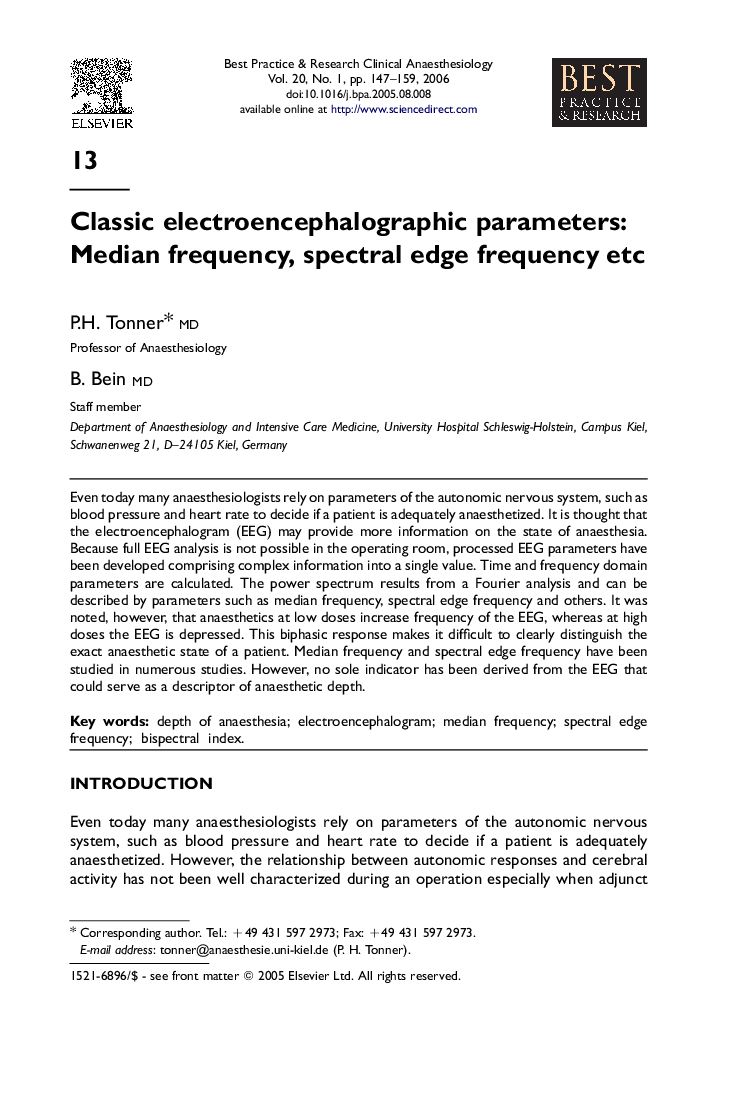| Article ID | Journal | Published Year | Pages | File Type |
|---|---|---|---|---|
| 2748939 | Best Practice & Research Clinical Anaesthesiology | 2006 | 13 Pages |
Even today many anaesthesiologists rely on parameters of the autonomic nervous system, such as blood pressure and heart rate to decide if a patient is adequately anaesthetized. It is thought that the electroencephalogram (EEG) may provide more information on the state of anaesthesia. Because full EEG analysis is not possible in the operating room, processed EEG parameters have been developed comprising complex information into a single value. Time and frequency domain parameters are calculated. The power spectrum results from a Fourier analysis and can be described by parameters such as median frequency, spectral edge frequency and others. It was noted, however, that anaesthetics at low doses increase frequency of the EEG, whereas at high doses the EEG is depressed. This biphasic response makes it difficult to clearly distinguish the exact anaesthetic state of a patient. Median frequency and spectral edge frequency have been studied in numerous studies. However, no sole indicator has been derived from the EEG that could serve as a descriptor of anaesthetic depth.
